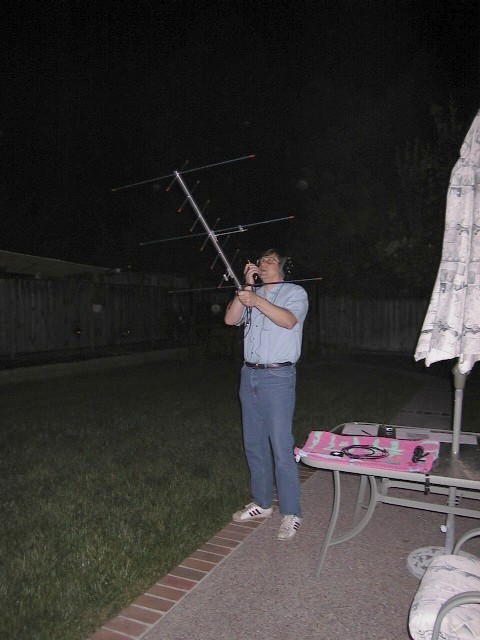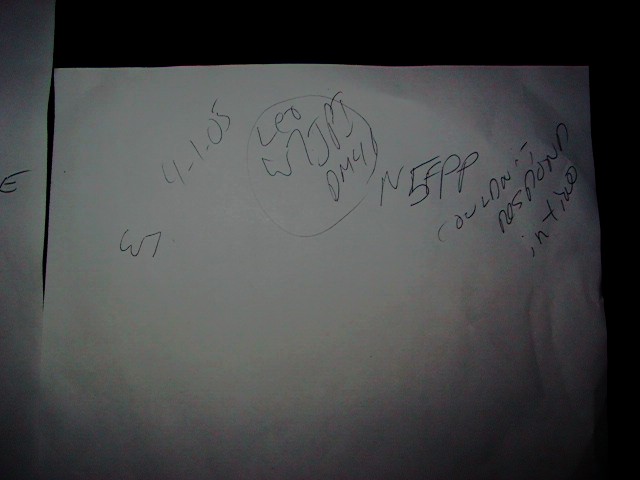
That's me with the Arrow antenna in my backyard. I worked AO-51 when it passed overhead a little after 9PM on Friday night, April 1, 2005. I'm amazed at how well I can hear AO-51 with this little gem of an antenna.
I recently purchased an Arrow II Satellite antenna and I've been having a blast working the AO-51 (also known as AO-Echo) satellite with just HTs from my backyard.
 |
That's me with the Arrow antenna in my backyard. I worked AO-51 when it passed overhead a little after 9PM on Friday night, April 1, 2005. I'm amazed at how well I can hear AO-51 with this little gem of an antenna. |
 |
The key to working a satellite is knowing when and where it is in the sky overhead. I used the Heavens-Above web site to find an AO-51 pass that I'd be able to work. Click here for the current list of Radio Amateur Satellite passes for San Jose. Note that AO-51 is listed as AO-Echo on this site. From there you can navigate to a specific satellite and find the pass you are interested in. They have a neat feature that will display a ground track for the satellite pass. Here's the ground track plot for the Friday night pass I worked. You can see the print out of the ground track on the right side of this picture. I also used J-Pass to print out a sky chart that shows the direction and elevation as the satellite passes overhead. The print out of the chart is on the left side of this picture. |
 |
I actually used two HTs to work the satellite. I used my Vertex VX-150 2m HT (in my right hand) to transmit on the uplink frequency, and I used my Yaesu VX-2 (hanging from my shoulder) to receive the downlink frequency. The VX-2 is normally in my shirt pocket when I operate -- I had it hanging from my shoulder by the antenna cable so it would be visible in this picture. Since I don't have headphones that will fit the jack on the VX-2, I just used a Yaesu earphone. I put on some hearing protection over the earphone to cut out most of the other sounds so I could hear myself through the satellite. Btw, hearing your own voice through a satellite is quite a kick! |
 |
Here's a close-up of the two HTs I was using. The VX-150 is shown tuned to the uplink frequency of 145.920 MHz (PL 67Hz). I used full power on the VX-150 (5w) when transmitting to the satellite. I took this picture after the satellite pass, which is why the VX-2 is tuned to 435.290. As it was nearing LOS I had to tune below the downlink frequency of 435.300 MHz to account for the Doppler effect. |
 |
Here's my make-shift log sheet. Working a satellite with a hand-held antenna and radios requires some juggling to be able to write down callsigns of stations that you've contacted. I did manage to write down W7JPI's callsign after a brief exchange. Then I heard N5FPP call me, but I had the VX-150 in the same hand as the antenna and wasn't able to respond right away because I was using the other hand to tune the VX-2 down in frequency to account for the Doppler effect. By the time I had the VX-150 back in my hand ready to transmit, other stations were making calls. Sorry N5FPP, if you're reading this. I need to work out a better juggling act so I don't miss calls like this in the future. Working a satellite pass with handheld equipment is an exhilarating 10 minute ride. Highly recommended! |